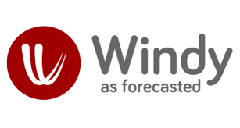5 useful sites for identifying surfing conditions
Don’t leave surfing conditions to chance! Check out the useful sites discusses below so you will know how to plan your surf for the best conditions only.
( Before reading this blog read our previous blog on how to understand what is good surfing conditions)
1. Magic Seaweed

Founded in South West England in 2002, Magicseaweed ranks as one of the world’s largest and most visited surf forecast and surf report websites.
Magic Seaweed tells you the size of the waves for 7 days in advance and when the tide will be in and out. For beginners a low tide is easier to surf. MSW provides an abundance of forecasting data and charts to dial into your local surf breaks. It is also effortless to apply the search function and find reports for spots you are planning to visit across the globe. The local photos are a great feature to get a feel for a beach you have never traveled to, often featuring professional-grade images from surf photographers. Live surf cams also feature on numerous breaks, enabling the would-be surfer to check live conditions. (Tip: remember what we discussed earlier about forecasts and local conditions. I often study a new break by comparing the report data and the live surf cam for a few days)
Magicseaweed uses a conditions rating system of one to five stars and color-coded wind directions of red, orange, and green to indicate if the winds are favorable or unfavorable.
Surfers are able to access seven days of forecasts for free, including short surf cam streams. A premium membership of $25.99 a year (payable $2.69 per month) provides a sixteen-day forecast, unlimited ad-free surfcam access, and additional swell insights from their panel of experienced surf forecasting experts.
2. Met Éireann
 Met Eireann is Ireland’s national meteorogical service. If you want to take your swell predicting skills to the next level, pressure (or synoptic) charts and coastal wave conditions are an incredibly valuable resource.
Met Eireann is Ireland’s national meteorogical service. If you want to take your swell predicting skills to the next level, pressure (or synoptic) charts and coastal wave conditions are an incredibly valuable resource.The site provides detailed weather charts. With a bit of practice you will be able to spot the difference between high and low pressures, predict wind directions and even swell direction.
Once you learn the the optimum chart for your chosen surf zone, it is enthralling to watch the systems develop and anticipations of a potential swell is a great feeling.
Check out the site if you are interested in how to interpret the weather and wave conditions, although trust me it can become a little bit addictive.
3. WINDFINDER

The Windfinder home page is a stunning, colourful representation of global wind speed and direction. The site offers reports and forecasts for over 45000 spots around the world. There is particular relevance to kite surfers and windsurfers, with spots including marinas and launching places, as well as surf breaks.
There is an excellent database of webcams, offering the user the chance to check the live conditions at their local spots as well as across the globe.
Windfinder processes data from 21,000 weather stations. Wind speed, wind direction, air temperature, air pressure and other values can be viewed in real time.
Similar to Windguru in the sense that wave data is limited to swell height and direction, however the free to access wind reports, updates and forecasts can be invaluable for planning a trip, or deciding on a place to surf during a trip.
Windfinder offers both a basic forecast, for at a glance representation of the conditions as well as a super forecast, with enhanced data. I am a big fan of the accurate tide tables that Windfinder provides.
4. SURF-FORECAST

Surf-Forecast.com provides surf forecast and surf reports for over 7,000 surf spots. A point of difference that places Surf-Forecast in our top ten, despite strong competition, is the detailed surf break guide for each location. Optimum swell direction, wind direction and tide position are listed. The unique consistency guide informs the reader of an estimated percentage of the year that the spot has clean, blown out or small surfing conditions. This can be excellent when you are looking to visit a new surf zone and identifying the go-to spots.
Users are able to set up custom email alerts to notify them when conditions align at their favourite surf spots, as well as confirming the report via live surf cam.
If I have one minor criticism of Surf-Forecast it is that the reports are quite “busy” looking, with lots of information to take in, and quite small text to read, compared to the clean looks of Surfline or Magicseaweed.
5. WINDY.COM

Windy is not technically a surf forecast site. It is a comprehensive free weather reporting and forecasting resource offering detailed information that surfers canuse to accurately forecast the upcoming wave conditions.
With a little practice and patience you will be paying tribute to the old school surfers by reading the charts to predict swells, with the added bonus of wind speed and swell size data at the push of a button.
Windy shows everything in stunning, colourful animation. You cannot access specific data for surfing spots like the other sites listed, but moving the cursor around the map shows you how the swells travel towards the coast. Windy also has, in my opinion, the most beautiful homepage of any website going.
I really do encourage you to take a look at Windy and spend some time learning the different layers you can apply to the map, particularly the wind and swell layers. In time you will be able to track weather systems and even pick up on incoming swells before some of the forecast sites.
Summary
As you can see there are an abundance of surf forecasts available to us as surfers. We have access to all the data we need to obtain accurate predictions, allowing us to score more waves than ever before.
The premium site of Magicseaweed is definitely setting new standards. However, the smaller regional sites offer surfers the opportunity to really tune into the dynamics of their surf zone.
Surfing
